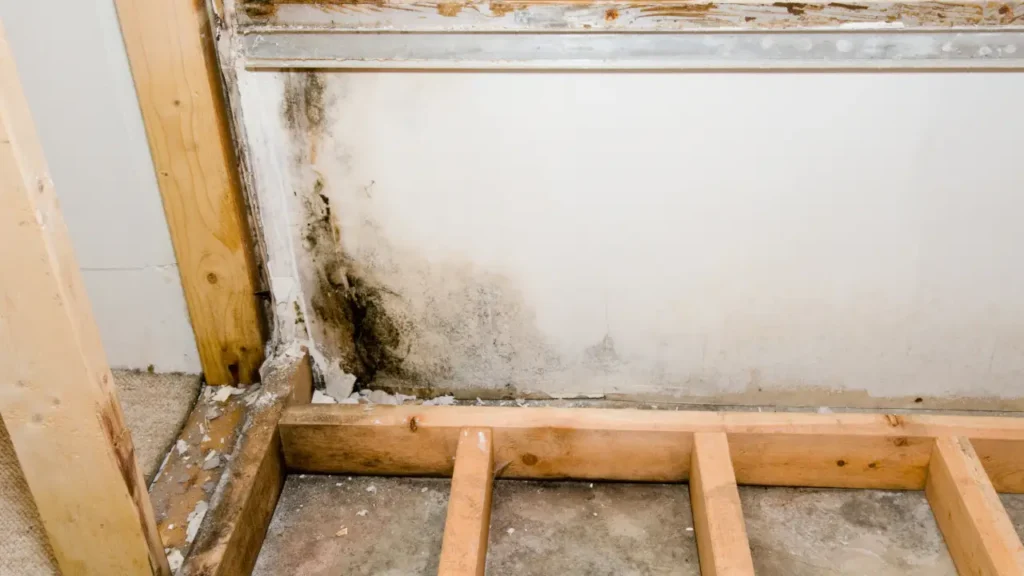Introduction
Mold in your home is more than an unsightly nuisance—it can damage structures, cause serious health problems, and significantly impact your property’s value. The big question many homeowners ask is: “Does homeowners insurance cover mold damage?” The answer is not always straightforward. In most cases, mold damage is only covered under specific circumstances, and the extent of coverage varies widely depending on the cause of the mold and your individual policy.
In this comprehensive guide, we break down how homeowners insurance treats mold, when it’s covered, when it’s not, and what you can do to protect yourself and your home in 2025.
What Is Mold and Why Is It a Problem?
Mold is a type of fungus that thrives in damp, humid environments. It often grows in hidden areas such as behind walls, under floors, or in basements and attics. Common causes include:
-
Leaky roofs or plumbing
-
Poor ventilation
-
Flooding or water backup
-
Humid climates
Mold can cause:
-
Respiratory problems (asthma, allergies)
-
Structural damage to wood and drywall
-
Musty odors that decrease home value
Because of these serious effects, mold damage can be costly to remove—and understanding your insurance coverage is essential.
Does Homeowners Insurance Cover Mold Damage?

When Mold Damage Is Covered
Homeowners insurance typically covers mold if it is the result of a “covered peril.” Covered perils usually include:
-
Accidental water discharge from appliances or plumbing
-
Sudden and accidental pipe burst
-
Roof damage caused by a storm (leading to water and mold)
-
Firefighting water used to extinguish a blaze
Example:
If a pipe bursts suddenly in your wall, and the resulting water damage causes mold, most standard homeowners policies will cover both the water damage and the mold remediation (up to your policy limits).
When Mold Damage Is Not Covered
Homeowners insurance does not typically cover mold caused by:
-
Long-term leaks or poor maintenance
-
High humidity or condensation
-
Flooding (without a separate flood policy)
-
Sewer backup (unless you have an endorsement)
-
Lack of proper ventilation
Example:
If mold grows because of a slow, undetected leak under your sink, your insurer may deny the claim on the basis of negligence or poor maintenance.
Types of Coverage Related to Mold
1. Dwelling Coverage
Pays for mold removal and repairs to the structure of your home (walls, ceilings, floors) if damage results from a covered peril.
2. Personal Property Coverage
Covers personal belongings like furniture or electronics damaged by mold—again, only if the mold was caused by a covered event.
3. Loss of Use
If your home becomes uninhabitable due to mold from a covered peril, your insurer may cover hotel bills and additional living expenses.
4. Endorsements & Riders
Some insurers offer optional mold endorsements that expand coverage for mold-related damage, even from non-standard causes. These add-ons typically cost more but provide peace of mind, especially in mold-prone regions.
How Much Coverage Can You Expect?
Most standard homeowners policies limit mold coverage even when it’s included. Common limits include:
-
$1,000 to $10,000 for mold remediation
-
Capped repair costs
-
May require special endorsements for full coverage
If you live in a humid climate (Florida, Texas, Louisiana, etc.), insurers may offer reduced mold coverage or exclude it altogether unless you purchase a rider.
Mold Damage Claims: Real-Life Scenarios
| Scenario | Covered? | Explanation |
|---|---|---|
| Burst pipe causes mold in the wall | ✅ Yes | Sudden, accidental event is a covered peril |
| Mold from long-term roof leak | ❌ No | Negligence or poor maintenance |
| Mold after hurricane flooding | ❌ No (unless you have flood insurance) | Flooding is not covered by standard policy |
| Dishwasher hose bursts, mold forms under cabinets | ✅ Yes | Sudden water discharge is a covered peril |
| Mold from high humidity in basement | ❌ No | Considered preventable through ventilation |
How to Prevent Mold (and Insurance Denials)
Insurance companies expect homeowners to take reasonable care of their property. Here are proactive steps you can take:
Fix Leaks Immediately
Repair any plumbing or roof leaks as soon as possible.
Use Dehumidifiers
Reduce humidity levels indoors, especially in basements or bathrooms.
Improve Ventilation
Use exhaust fans in bathrooms, laundry rooms, and kitchens.
Clean Regularly
Remove visible mold immediately with mold-killing solutions.
Insulate Properly
Prevent condensation with proper insulation around windows and pipes.
How to File a Mold Damage Insurance Claim
If you believe your mold damage should be covered, follow these steps:
-
Document the Damage: Take photos and videos of the affected areas.
-
Stop Further Damage: Fix the source of the water problem immediately.
-
Contact Your Insurer: Report the claim as soon as possible.
-
Hire a Mold Remediation Specialist: Get professional help and keep all receipts.
-
Keep Detailed Records: Maintain a paper trail of all communications and expenses.
How to Get More Mold Coverage
Purchase a Mold Endorsement
Ask your insurer if they offer a mold damage rider or increased limit option.
Consider Flood Insurance
If you live in a flood-prone area, buy separate flood insurance through FEMA’s National Flood Insurance Program (NFIP) or a private provider.
Choose the Right Provider
Some insurers are more mold-friendly than others. When shopping for home insurance, ask specifically about mold coverage and compare limits.

Best Home Insurance Companies for Mold Coverage in 2025
| Provider | Mold Coverage | Notable Features |
|---|---|---|
| Amica | Mold endorsement available | High customer satisfaction |
| USAA | Covers mold for military families | Strong service, military-only |
| Farmers | Optional mold coverage | Flexible policy add-ons |
| State Farm | Mold included with water damage | Nationwide availability |
| Hippo | Smart home monitoring discounts | Modern, tech-forward coverage |
Final Thoughts
Mold damage can be expensive, harmful to your health, and difficult to clean—but whether it’s covered by homeowners insurance depends on how and why it occurred. In most cases, mold caused by sudden, accidental water damage is covered. However, mold from neglect or long-term issues is not.
To avoid surprises, review your policy carefully, ask about mold endorsements, and take steps to prevent mold growth in the first place. A proactive approach, combined with the right coverage, can save you thousands and protect your home and family.






